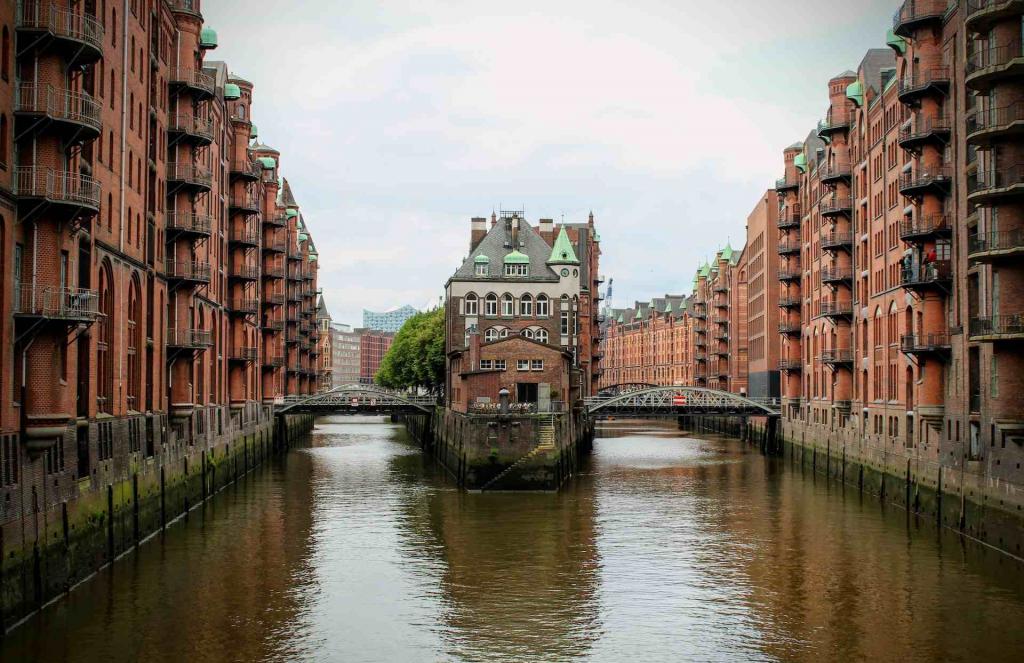Thessaloniki gets ready for its metro launch in November
The underground rapid transit lines have been under construction for almost two decades due to various project delays
 TheMayor.EU logo
TheMayor.EU logo 
Hamburg wants to avoid 'the Death of High Street' scenario by investing 6.5 million into city centre, Source: Thomas Konings / Unsplash
Since the coronavirus pandemic, the city's downtown has been feeling the effects of changes in shopping and leisure behaviour, which have driven people away
Last week, Hamburg announced that it would invest 6.5 million euros into a rejuvenation programme for the urban centre. According to a statement by the city, since the pandemic, the area has experienced a slump in interest and both cultural and retail locations.
The initiative will receive around 4.8 million from the German federal programme “Sustainable Inner Cities and Centres” (Zukunftsfähige Innenstädte und Zentren). Additionally, Hamburg authorities will contribute an additional 1.7 million to the so-called “Hidden Potential - For a lively and resilient Hamburg city centre” (Verborgene Potenziale – Für ein lebendiges und resilientes Hamburger Zentrum).
Authorities say that they aim to work with local representatives, organisations and stakeholders to implement sustainable projects to breathe back life into the city centre and promote resilience, both in housing development and cultural spaces.
Although oftentimes it does not look like it, major urban centres around the world often face a lot of pressure to keep being attractive and to continue drawing people in. As cities get bigger and more and more people start living and working away from the centre, cities need to work harder to make them want to populate the vast public spaces and busy shopping streets.
Not all cities succeed in this endeavour – in fact, with the rise of online shopping and big drivable retail plazas outside of urban areas, many have already failed to keep their central streets lively. The condition is so widespread that it has its own term – The Death of High Street.
The term is used mainly to refer to British cities, however, the phenomenon is very much not unique to the United Kingdom. It is characterised by legacy brands and big stores moving away from central shopping streets, leaving behind huge retail spaces and vacancies that tend to stick – driving even more people away from city centres.
Hamburg is currently not undergoing a mass exodus of retailers and cultural venues from its city centre, but businesses there are experiencing a drop in customer traffic, made worse by the pandemic and cost of living crisis Europe is currently going through.
In fact, the crisis now has most likely stunted the post-Covid recovery process that many cultural spaces and restaurants were expecting in 2022. However, local authorities see this as an opportunity to highlight the area’s potential.
A key goal is to support and expand the variety of uses in the city centre. That could be urban production, cultural facilities or more living space. It is important that non-commercial offers are also created for the citizens. The city centre is also to be enlivened by events and exhibitions.

The underground rapid transit lines have been under construction for almost two decades due to various project delays

Now you can get your wine in Talence by paying directly in Bitcoin

That’s because the state has to spend money on updating the railway infrastructure rather than subsidizing the cost of the popular pass

Rethinking renewable energy sources for the urban landscape

The examples, compiled by Beyond Fossil Fuels, can inform and inspire communities and entrepreneurs that still feel trepidation at the prospect of energy transition

Now you can get your wine in Talence by paying directly in Bitcoin

The 10th European Conference on Sustainable Cities and Towns (ESCT) sets the stage for stronger cooperation between the EU, national and local level to fast track Europe's transition to climate neutrality.

At least, that’s the promise made by the mayor of Paris, Anne Hidalgo

The underground rapid transit lines have been under construction for almost two decades due to various project delays

At least, that’s the promise made by the mayor of Paris, Anne Hidalgo

Hostal de Pinós is located in the geographical centre of the autonomous region

Despite its church-y name, the district has long been known as the hangout spot for the artsy crowds

Urban dwellers across the EU are having a say in making their surroundings friendlier to people and the environment.

Forests in the EU can help green the European construction industry and bolster a continent-wide push for architectural improvements.

Apply by 10 November and do your part for the transformation of European public spaces

An interview with the Mayor of a Polish city that seeks to reinvent itself

An interview with the newly elected ICLEI President and Mayor of Malmö

A conversation with the Mayor of Lisbon about the spirit and dimensions of innovation present in the Portuguese capital














